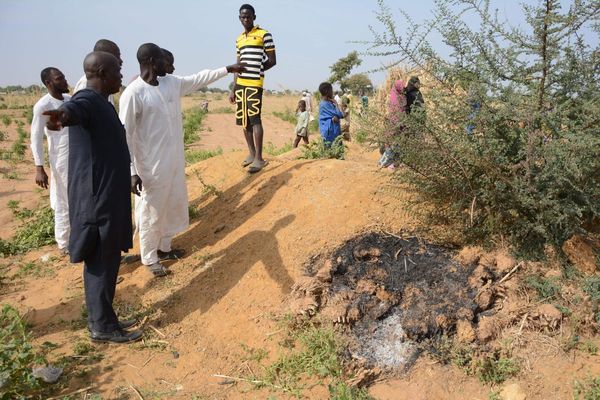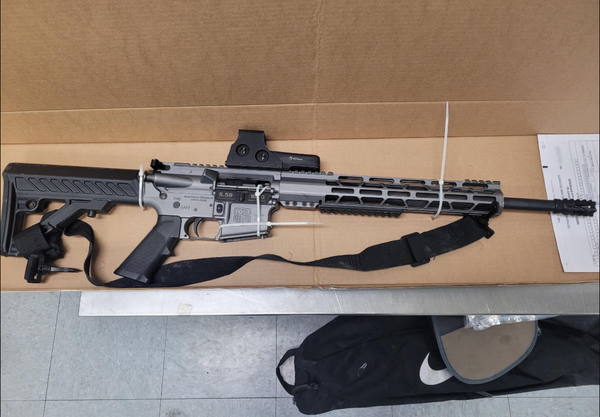
- The coincidental evidence linking these events is substantial enough to continue pursuing every lead that might connect the two. At present, however, nothing definitive has emerged that suggests the two deceased suspects, Matthew Alan Livelsberger and Shamsud-Din Jabbar, were coconspirators planning coordinated attacks.
Two days into the investigation of the explosion in Las Vegas on New Year’s Day, law enforcement officers continue to sift through evidence that might link it with an earlier lethal vehicular rampage in New Orleans.
Beyond the most obvious commonality—that the two acts were committed within hours of each other—the list of odd coincidences between suspects Matthew Alan Livelsberger and Shamsud-Din Jabbar is compelling enough to warrant further examination.
“There are a number of things in this case that are similar to the attack in New Orleans,” Las Vegas sheriff Kevin McMahill acknowledged during a press briefing on Thursday, adding that these seeming coincidences remain a subject of their investigation.
For example, the two appear to potentially have been motivated by political events. While Livelsberger chose the Trump International Hotel weeks before the president-elect’s inauguration, Jabbar openly admitted to having joined the militant jihadist terrorist group ISIS.
Independent experts urged law enforcement authorities to pursue every avenue, including a possible connection, until a complete picture of events emerges.
Nathan Sales, the chief counterterrorism official under the Trump administration, told Fox News the list of coincidences “bears a closer look.”
On Thursday, FBI deputy assistant director Christopher Raia issued a request that anyone who knew Jabbar approach the bureau, no matter how seemingly inconsequential their testimony might be.
“We need to talk to you. You may not think you have relevant information, but what you know could tie into one of our investigative leads,” he told the press on Thursday.
Livelsberger and Jabbar share a military background
The two suspects’ profiles reveal a shared military background: Both were trained soldiers serving in the U.S. Army.
They were both stationed at one point at Fort Bragg in North Carolina—now called Fort Liberty—a well-known base home to the elite Airborne and Special Operations Forces.
In 2009, the two were even deployed to Afghanistan at the same time, although no records have as yet indicated they were in the same province.
Each had furthermore intended to employ some form of explosive in their attack, although Jabbar was shot dead by law enforcement officers before he could trigger the two improvised devices secured on the scene.
Fortune reached out to the U.S. Army seeking comment and any additional information as to whether their service records could shed any light on their actions, but has not received a response.
Both used Turo app
The list of coincidences doesn’t stop there. The suspects also opted to employ electric trucks as the instrument of their attack.
While full-size pickups are one of the most popular vehicle segments in the United States, the attackers’ apparent deliberate choice of an EV like the F-150 Lightning and Tesla Cybertruck may be considered unusual.
Both models are still very much novelties, with only tens of thousands sold across the entire country in a new-truck market that numbers in the millions.
Furthermore, each of them rented their vehicles out of state via the digital peer-to-peer sharing platform Turo in Denver and Houston.
Rather than carry out their attacks there, they drove them across state lines to Las Vegas and New Orleans, respectively.
Why they chose those cities is as yet unclear, but the two are tourism magnets best known for their vices—casinos and gambling in regard to the former, and the drinking and revelry associated with Mardi Gras in the case of the latter.
“That’s something investigators need to take a very hard look at,” said counterterrorism expert Sales, referring to the commonalities shared by the twin events.
No cold, hard evidence linking the suspects as coconspirators
Nevertheless, there is no evidence as yet that the two perpetrators knew of each other’s existence.
While Livelsberger was a Green Beret still on active duty, committing the act while on leave from Germany, Jabbar had already been discharged from service in 2020 at the rank of staff sergeant.
Moreover, their method of attack differed, with one choosing to mow down pedestrians with his truck before exiting the vehicle to continue his rampage.
Livelsberger meanwhile appeared to have first triggered his makeshift explosives employing propane canisters, fireworks, and gasoline, before dying from an apparent self-inflicted gunshot to the head.
FBI deputy assistant director Raia consequently said it was the bureau’s current assessment at this early stage in the investigation that Jabbar and Livelsberger were not coconspirators.
“At this point there is no definitive link between the attack here in New Orleans and the one in Las Vegas,” he told reporters.
He added that while Jabbar professed loyalty to ISIS, it currently appears as if he acted alone without outside aid from the jihadist terror group.







